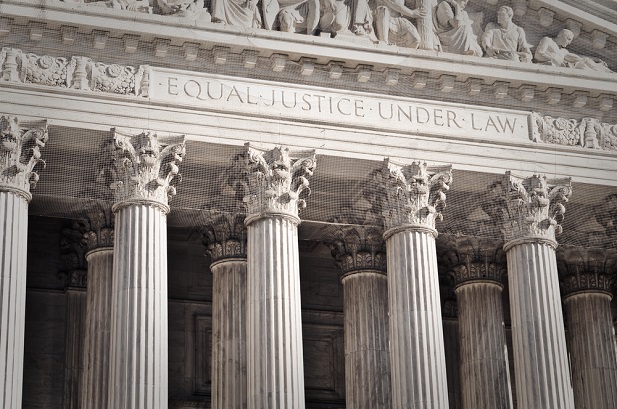The Supreme Court heard arguments today in an EmployeeRetirement Income Security Act (ERISA) case that has massiveimplications for plan sponsors and service providers, according toone attorney.
|On its face, the allegations raised against the fiduciaries totwo Intel Corp. retirement plans are part-and-parcel to the type of"Monday morning quarterbacking" seen in most ERISA claims, saysWill Delany, a partner with Holland & Knight. The plan wasloaded with allegedly expensive, underperforming investmentoptions—including alternative asset classes—and fiduciaries failedto fulfill their obligation to monitor the investments underERISA.
|Intel was able to win summary judgment in a Northern CaliforniaDistrict Court on the ground that the claims were time-barred underone provision of ERISA's statute of limitations. That provisionspecifies that a lawsuit against a plan sponsor has to be broughtwithin three years from "the earliest date on which the plaintiffhad actual knowledge of the breach or violations."
|The plaintiff in the Intel case, who worked for the companybetween 2010 and 2012, brought his suit outside the three-yearlimit, the district court found. When deposed, he admitted tovisiting the company portal that hosted the retirement plandocuments but testified that he did not "think" he had actuallyread the plan documents.
|In dismissing the case, the district court found that was enoughto satisfy the statute of limitation's "actual knowledge"provision. But on appeal, a Ninth Circuit panel unanimously foundin favor of the employee, reversing the lower court decision. Thefact that the plaintiff did not recall reading the plan documentsmeant he did not have "actual knowledge" of the claims he wouldultimately bring.
|In its decision, the Ninth Circuit conceded that Intel hadprovided all the information necessary for the plaintiff to makeinformed investment decisions, Delany explains. "It's undisputedthat the participant had sufficient information," he says. "In alot of ways, ERISA is a disclosure statute. The case boils down towhether having constructive knowledge—access to the plandocuments—is enough to satisfy the three-year statute oflimitation."
||
Implications If SCOTUS Rules Against Intel
If the Supreme Court were to side with the Ninth Circuit, theimplications would be considerable —not only for plan sponsors, butalso for investment providers.
|"It would mean that it would not be enough to provide plandocuments, but sponsors would have to prove participants read themand perhaps prove that they also understood them," says Delany."That's a much harder burden of proof to establish the three-yearlimitation period."
|What the Supreme Court can be expected to do in rendering adecision is to look at the statute and assess the plain meaning ofthe words "actual knowledge" with the surrounding structure ofERISA, Delany says. But handicapping how the court will rule isanybody's guess.
|"This one is a close call," thinks Delany. "ERISA cases caninspire odd alliances on the court. On the one hand, you wouldthink liberal justices would lean for participants and conservativejustices for employers and fiduciaries. But the conservativejustices tend to be more strict statutory constructionists, meaningthey tend to interpret the text as it is written." And ERISA's textof the three-year limitation is clear: It starts from the time of"actual knowledge."
|Delany, who both litigates ERISA claims and counsels sponsors,says some sponsors already require affirmative consent certifyingthat participants have read plan documents. "If the Supreme Courtaffirms the Ninth Circuit's decision, you are likely to see more ofthat," he says. "But whether or not those will be enough to carrythe day in court remains to be seen. The challenge is that theplaintiffs hold all the cards. All they have to do is say they didnot read the documents."
|The Supreme Court's decision in Intel Corp. Investment PolicyCommittee v. Sulyma is expected to be released in the spring of2020.
||
From: BenefitsPro
Complete your profile to continue reading and get FREE access to Treasury & Risk, part of your ALM digital membership.
Your access to unlimited Treasury & Risk content isn’t changing.
Once you are an ALM digital member, you’ll receive:
- Critical Treasury & Risk information including in-depth analysis of treasury and finance best practices, case studies with corporate innovators, informative newsletters, educational webcasts and videos, and resources from industry leaders.
- Exclusive discounts on ALM and Treasury & Risk events.
- Access to other award-winning ALM websites including PropertyCasualty360.com and Law.com.
*May exclude premium content
Already have an account? Sign In
© 2024 ALM Global, LLC, All Rights Reserved. Request academic re-use from www.copyright.com. All other uses, submit a request to [email protected]. For more information visit Asset & Logo Licensing.








